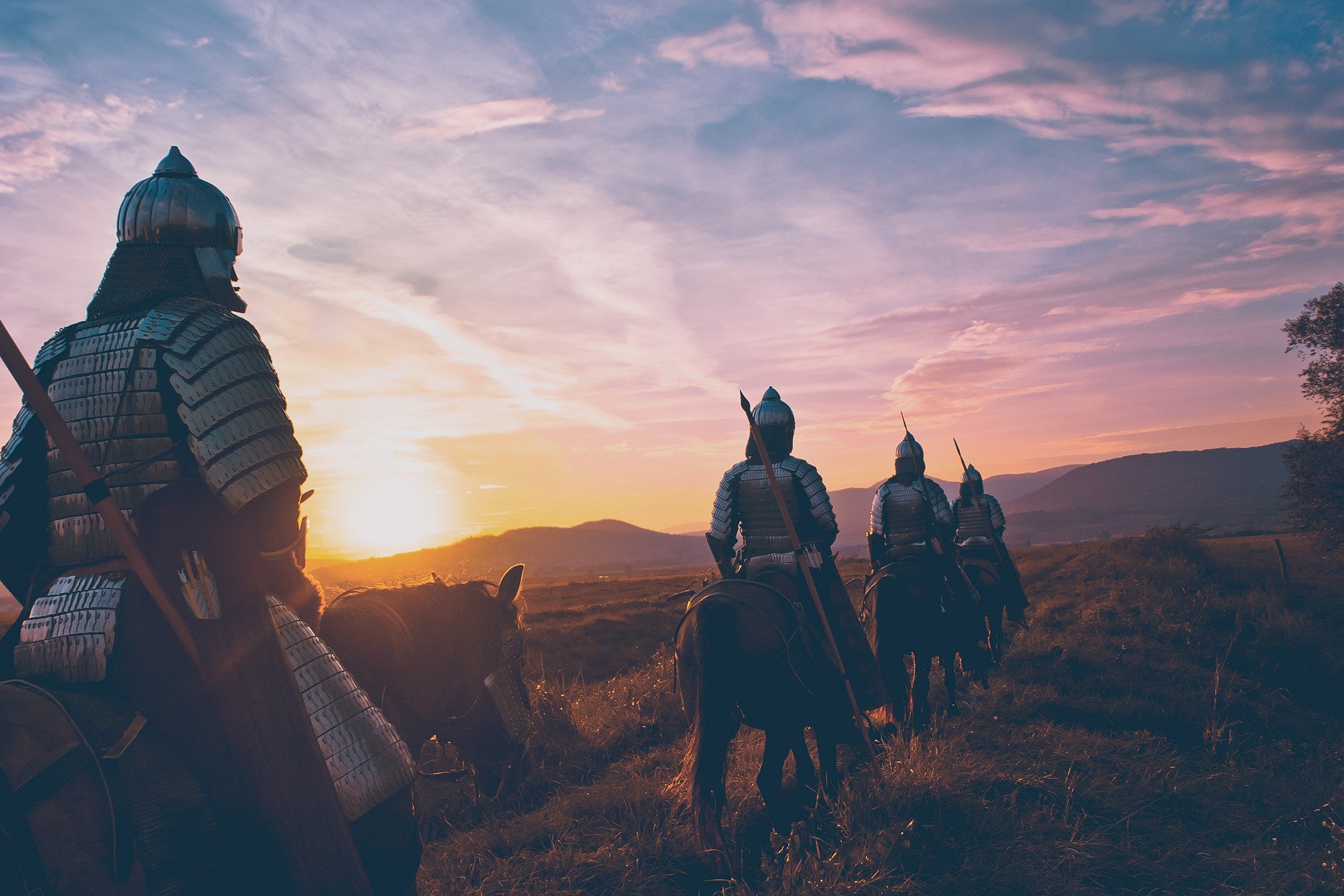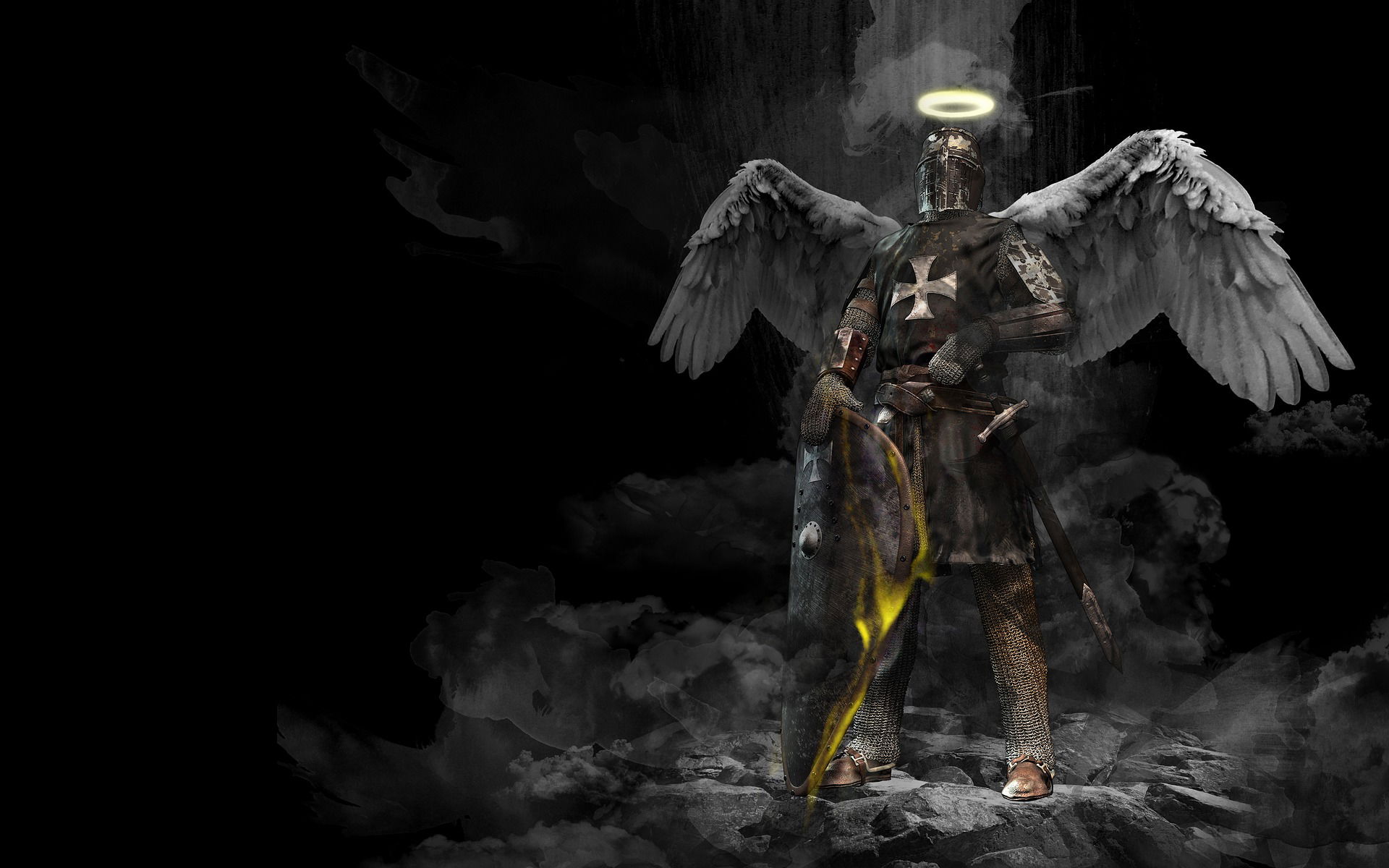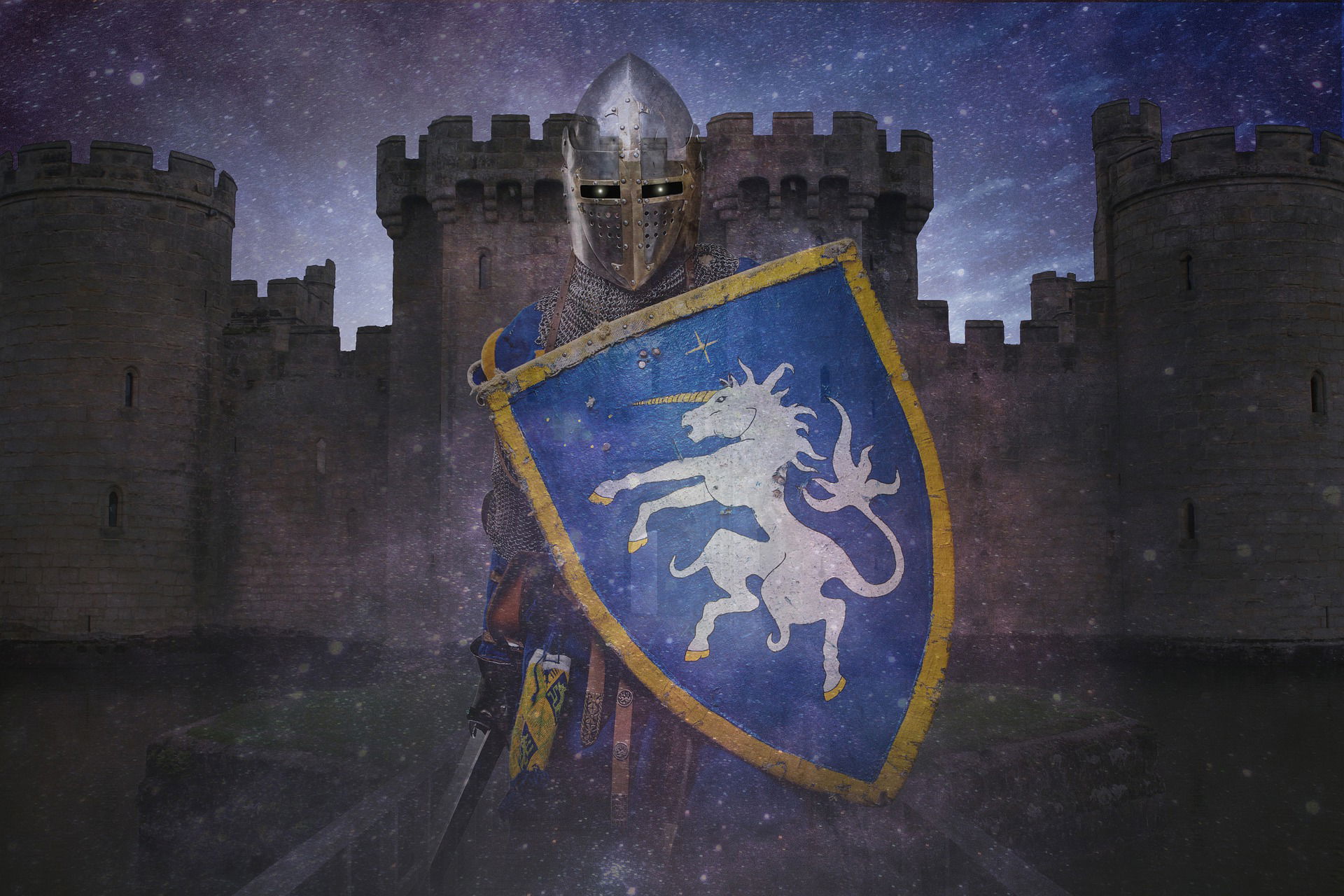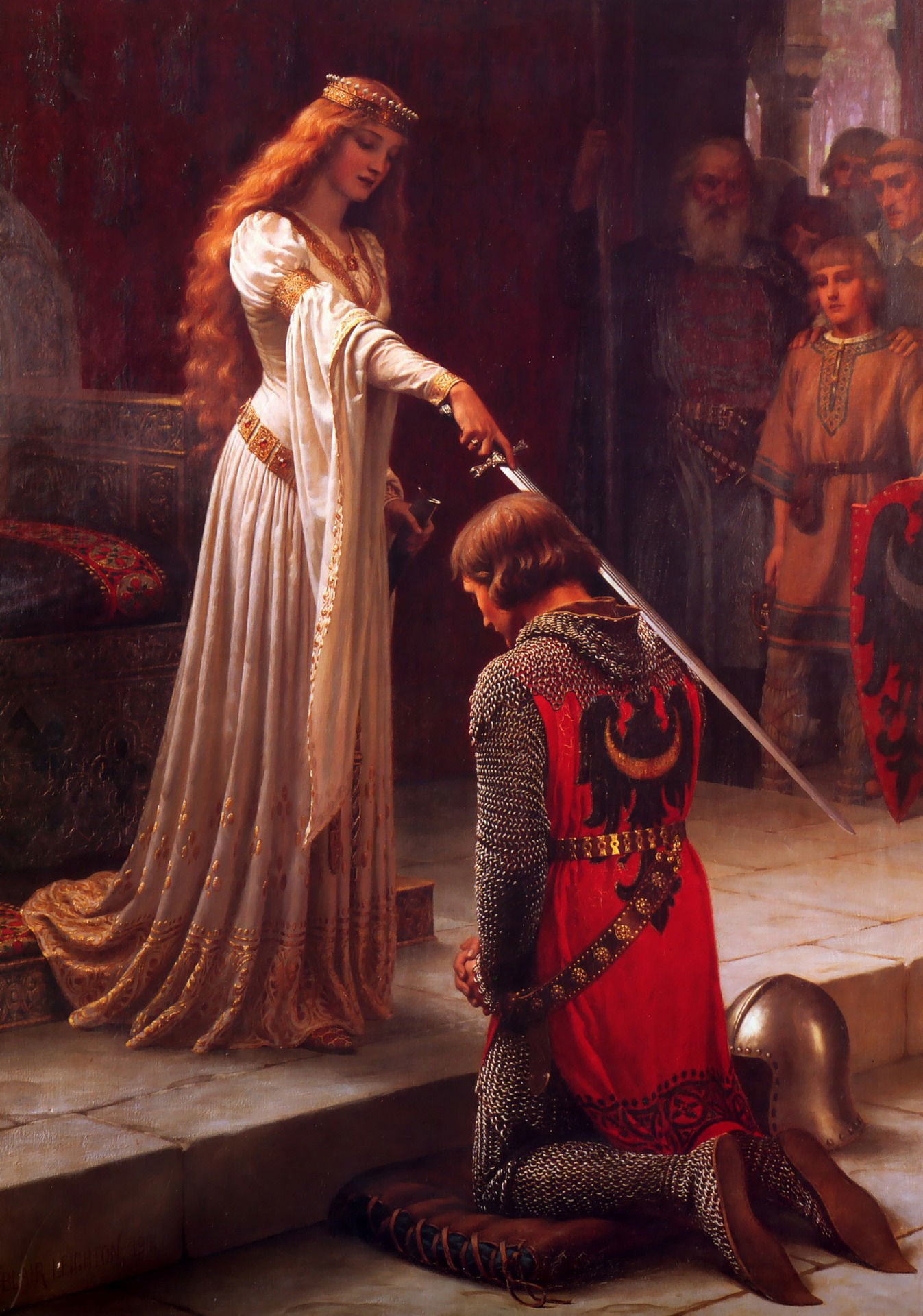The Evolution of Knights and the Knightly Code of Chivalry
"A knight is sworn to valor!" these words are uttered as part of "the old code" in the 1996 fantasy action-adventure film Dragonheart. For many, the knight has and remains a symbol of manhood and courage. Like the American Battleship, which is long obsolete, but still, a common image of power, fully armored men often atop horseback are in every way as much an image of strength in the twenty-first century as they were hundreds of years ago. With the release of blockbuster medieval fantasy films, the draw for everything medieval has only grown. However, most people today have some misconceptions about knights and their role in society, particularly when it comes to the early Middle Ages and antiquity. Knights were not an exclusively medieval thing although they are most often associated with that period. The origin of knights comes from accent times and numerous cultures had early forms of special fighting men. In the Bible, 2 Samuel 23:8-23 we are told that in the days of King David, there were thirty "Mighty Men" handpicked by the king as his greatest and most trusted warriors as well as three even more powerful friends he had as his elect fighters. In Rome and Greek culture, the heavily armored hoplite units and roman horsemen called equites were predecessors to European knights. The equites in particular were mounted crack units often turning the tide of the battle.

Later on, we see the first mention of the word knight, cniht in old English, used by early Eruopean militaries. According to The Online Etymology Dictionary cniht means,
"Boy, youth; servant, attendant," a word common to the nearby Germanic languages (Old Frisian kniucht, Dutch knecht, Middle High German kneht "boy, youth, lad," German Knecht "servant, bondman, vassal"), of unknown origin. A later meaning is a military follower of a king or other superior."
Early knights were mounted soldiers of superior quality, often with far more loyalty than the average soldier. In the Dark Ages and even early medieval times, knights were objectively warriors of the king or warlord, not necessarily chivalric or powerful landowners with castles and large sums of money. Knights were still in a sense the best of the king's men. But even in the dark ages, the idea of knights being something other than just warriors was slowly growing in popularity. In this critical time of history, with the western roman empire now gone powerful warriors had nearly unlimited power. After the crusades began in the Holy Land, the pope, as well as church leaders, became critical in the building of our classic European knight. The church's goal was to use the destructive powers of the fighting man for good, particularly the protection of the poor, women, and the church lands. More than that was the hopes that the ideal virtues such as mercy, humility, and chastity would be engrained into the hearts of those who most might be tempted by the lure of power. The crusading era brought in an almost supercharged zealous ambition with the founding of Religious Orders like The Hospitaller Knights of St John, The Teutonic Order, and the Knights Templer.

The Knights Temper in particular were by far the most famous group of crusaders. These strict elite warrior monks, however, began much differently than imagined or later depicted. Starting out as The Poor Fellow-Soldiers of Christ and the Temple of Solomon, the order was originally set up to protect pilgrims who visited the Holy Land from danger. They lived a life of strict discipline, fasting, celibacy, and prayer as well as rigorous combat training. The Knights Hospitaller, while a strong fighting force focused more on works of charity, particularly caring for the sick. These orders are highly romanticized by modern historical books and films, often with less than perfect accuracy. One thing for sure is that a majority of the members of both orders were not mighty demigods, or bloodthirsty zealots but simple men with mixed intentions. For the most part, I think the outcome of these orders, at least initially was a good thing. Many did good works helping the weak and sick as well as showing great courage in battle. Others did unfortunately use the power of their influence to amount personal wealth and political gain. Of all knights in the elect orders, the Knights Hospitaller seem to be the most virtuous, and my personal favorite of all the medieval era military religious orders. As the Kingdom of Jerusalem grew smaller and was eventually overrun by Muslim-led powers, most of these influential groups moved to Europe, ending the crusading era in Palestine.

One thing for sure is that in Europe it was not until the high Middle Ages began the real romanticizing began, largely in part to stories of King Arthur and the Knights of the Round Table, made famous by authors like Chrétien de Troyes. The idea of chivalry became the highest goal of the knight of the late medieval period, promoted not only by books, songs, and art, but by the culture and of course, the church. Throughout Europe knighthood was something that was indeed a prestigious tidal for friends of powerful leaders, often with rich lands, castles, and slaves in the form of surfs, in return for allegiance to the king or lord above you. A lot of the time becoming a knight meant extensive training for the first half of life. Pages and later squires were instructed in physical training in the art of battle, as well as having their fair share of book learning with basic theology and etiquette. until you were knighted. After that, it seemed that most of the time life was rather plush, at least in times of peace. Most of the time the rich, members of royalty, and children of knights had the sole privilege of knighthood. Now, this meant that knighthood was based on who your parents were had little to do with skills or virtue. At the height of their power secular knights resembled little of the ideal of some of their earlier counterparts, while religious orders became over-politicized and complex social powerhouses.

Courtly love, especially in France, a very complex part of chivalry, led to the stereotypical knight in shining armor, saving beautiful ladies in distress from some terrible and monstrous foe. However, it seemed like the knightly virtues of the day were more of a fantasy than reality. Although some knights did live up to their tidal, knights also highly contributed to the corruption of the Middle Ages. The feudal system, while far better than other forms of government, only worked if the knight or lord of the manor deeply cared for his people. Secular knights in particular were prone to the temptations of power, immorality, greed, and tyranny. Codes of knightly conduct were actually not as common as most people think and varied greatly. One thing is for sure, far too many knights did not live up to them. Instead of setting an example of virtue, mercy, and chastity, knights fell short of the ideals. The Renaissance period in particular was a dark time of history and the true decline of knighthood, from a warrior to a tidal. While society as a whole fell into several, political, social, and economic changes the merchants, traders, and bankers slowly grew in importance. Governments also became far more centralized, with standing armies, and more sophisticated armor-piercing weapons, like muskets and more powerful longbows, meaning knights lost much of their importance. During this time the feudal system was fading out with nobles and lords gradually losing authority over the lower classes that they had used to rule. Now the wealthiest and most influential men were business leaders, and politicians, not knights or nobility. Knights became a symbol and only a shadow of their past power and importance in a new age of the ever-evolving world.